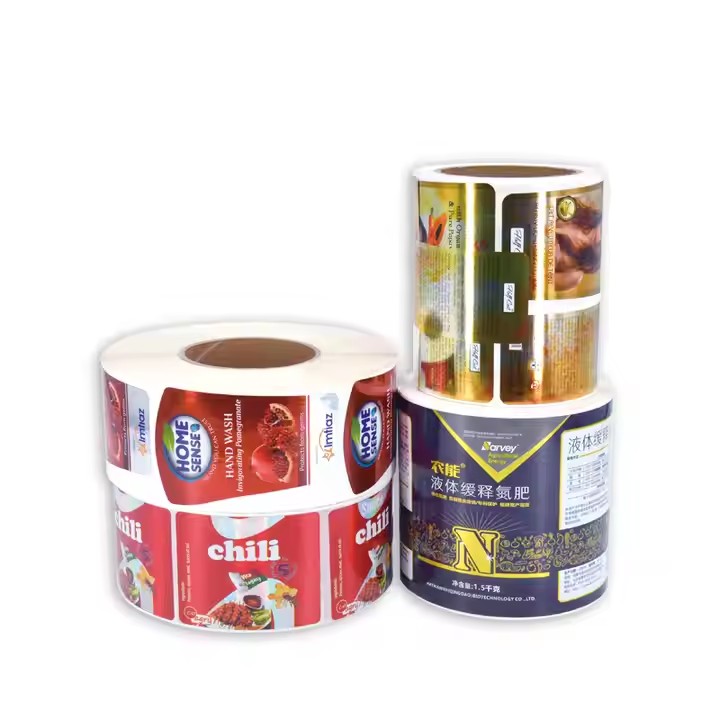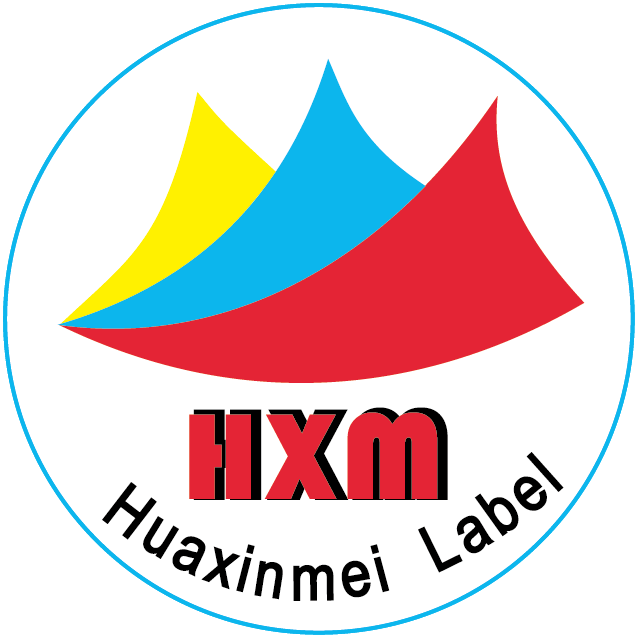Hot stamping relief is a kind of label printing process, which can make the label present a high-end and elegant look. As long as this hot stamping relief label is affixed, it can increase the value of the entire product and make the product more expensive. This is the added value brought by the hot stamping relief label.
Design and Plate Making
Design of the Original Manuscript: According to the customer’s requirements or design creativity, use professional graphic design software (such as Adobe Illustrator, Photoshop, etc.) to design micro-engraved patterns or texts. When designing, consider the fineness of the pattern, the expression of the concave and convex effect, and the coordination with the overall printed matter. At the same time, pay attention to avoiding overly complex or tiny lines and patterns to prevent problems during plate making and printing. The original design should be as simple as possible, and simple enough for people to easily remember the product. For the design of any pattern, the top priority is to make people remember the product name, and everything else is secondary.
Making the Printing Plate:
Engraving the Master Plate: Transfer the designed pattern onto the engraving material, such as a copper plate, zinc plate, or resin plate. Use a high-precision engraving machine or manual engraving tools to carve the graphic part into a raised shape according to the design requirements to form the master plate. The precision and depth of engraving directly affect the micro-engraving effect and quality of the final printed matter. It requires an experienced engraver to operate to ensure the details of the pattern and the smoothness of the lines.

Making the Impression Plate: According to the master plate, make the impression plate for hot stamping relief printing through processes such as electroforming, electroplating, or chemical etching. The impression plate is usually an intaglio plate with a shape opposite to that of the master plate. It will come into contact with the paper and the hot stamping material during the printing process and apply pressure to achieve the micro-engraving effect.
Material Preparation
Paper Selection: Select the appropriate paper according to the purpose and requirements of the printed matter. Generally speaking, thicker and stronger papers, such as cardboard, art paper, or special paper, can better withstand the pressure of hot stamping relief printing and can better present the micro-engraving effect. At the same time, consider the surface flatness and smoothness of the paper to ensure good contact with the printing plate and uniform transfer of the ink.
Ink Selection: Select the ink suitable for relief printing, which requires good fluidity, transferability, and drying property. For hot stamping relief micro-engraving printing, inks with strong covering power and bright colors are usually selected to highlight the visual effect of the micro-engraved pattern. In addition, inks with special effects, such as fluorescent ink, pearlescent ink, etc., can be selected according to needs to add a unique visual effect to the printed matter.

Preparation of Hot Stamping Materials: Prepare the corresponding hot stamping materials according to the design requirements, such as hot stamping gold foil, hot stamping silver foil, colored foil, or holographic foil. The quality of the hot stamping material directly affects the glossiness, adhesion, and durability of the hot stamping effect. Therefore, choose products with reliable quality and good brand reputation. At the same time, select the appropriate color and model of hot stamping foil according to the color and style of the printed matter.
Printing and Hot Stamping
Plate Mounting and Adjustment: Install the made impression plate on the printing plate cylinder or plate table of the hot stamping relief printing press and carry out precise positioning and adjustment. Ensure that the gap between the printing plate and the impression mechanism is uniform and the pressure is moderate to ensure that the ink and hot stamping material can be accurately transferred to the paper during the printing process and achieve the desired micro-engraving effect. At the same time, adjust the ink supply device and the hot stamping foil conveying device to make them work properly.
Printing the Base Color: First, carry out ink printing. Evenly coat the ink on the raised part of the printing plate, and then transfer the ink to the paper through the impression mechanism of the printing press to form the base color of the micro-engraved pattern. When printing, control the amount of ink and the printing pressure to avoid situations such as ink overflow causing plate fouling or insufficient ink causing an unclear pattern. For multi-color printing, print successively according to the color sequence and carry out precise registration to ensure the accuracy of the color and the integrity of the pattern.
Hot Stamping the Micro-Engraved Pattern: Carry out the hot stamping operation on the paper with the printed base color. Place the hot stamping foil in the hot stamping device. Through heating and pressurization, make the hot stamping foil closely fit with the pattern part on the paper and transfer the metal or colored coating on the hot stamping foil to the paper to form a pattern with a micro-engraving effect. The hot stamping temperature, pressure, and time are the key factors affecting the hot stamping effect, and need to be adjusted appropriately according to the characteristics of the hot stamping material and the paper. Generally speaking, too high a temperature may cause the hot stamping foil to discolor or the paper to deform, and too low a temperature will affect the adhesion of the hot stamping foil; too much pressure may damage the paper or the printing plate, and too little pressure will make the hot stamping effect not firm; too long or too short a time will affect the quality of the hot stamping.
Quality Inspection and Finishing
Quality Inspection: Conduct a comprehensive quality inspection of the printed hot stamping relief micro-engraving products, including aspects such as the clarity, integrity, registration accuracy, color accuracy, firmness, and glossiness of the hot stamping effect of the pattern. Use professional inspection tools, such as magnifying glasses, color difference meters, etc., during the inspection process to conduct a detailed inspection of the products. For the discovered quality problems, such as ink shortage, plate fouling, poor hot stamping adhesion, pattern deformation, etc., analyze the causes in a timely manner and take corresponding measures for adjustment and improvement, such as readjusting the printing parameters, replacing the printing plate or the hot stamping material, etc.

Finishing and Packaging: Sort out the qualified products, remove the excess scraps and waste paper, and package them according to the customer’s requirements. The packaging method can select appropriate packaging materials and packaging forms according to the quantity, size, and use of the products, such as carton packaging, plastic bag packaging, or hardcover gift box packaging, etc., to ensure that the products are not damaged during transportation and storage.
The above is the general process of hot stamping relief micro-engraving printing. In actual operation, appropriate adjustments and optimizations also need to be made according to specific printing equipment, materials, and process requirements to ensure the printing quality and effect.


